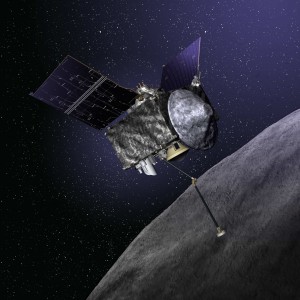
NASA’s Origins Spectral Interpretation Resource Identification Security Regolith Explorer (OSIRIS-REx) Courtesy: Lockheed Martin

Mission Critical Design Review (CDR) for OSIRIS-REx was held April 1-9 at Lockheed Martin Space Systems Company in Littleton, Colorado. Credit: Lockheed Martin
NASA’s Origins Spectral Interpretation Resource Identification Security Regolith Explorer (OSIRIS-REx) is taking shape.
This return sample mission to asteroid Bennu is to launch in the fall of 2016. The spacecraft will then rendezvous with the space rock in 2018. Following a year of reconnaissance of the object, OSIRIS-REx will snag a sample of the asteroid — at least 2 ounces (60 grams) — and return the material to Earth for scientists to study in 2023.
A successful Mission Critical Design Review (CDR)for OSIRIS-REx was held April 1-9 at Lockheed Martin Space Systems Company in Littleton, Colorado – the firm that is building the spacecraft.
The upshot of the review is that the green light has been given to begin building the spacecraft, flight instruments and ground system.
NASA’s Goddard Space Flight Center will provide overall mission management, systems engineering, and safety and mission assurance for OSIRIS-REx. The University of Arizona leads the effort and provides the camera system and science processing and operations center.
OSIRIS-REx is the third mission in NASA’s New Frontiers Program, which is managed by the Marshall Spaceflight Center.
OSIRIS-REx will be the first U.S. mission sent to a near-Earth asteroid to collect and return samples.
The initiative brings together the best of NASA’s science, technology and human exploration efforts to achieve President Obama’s goal of sending humans to an asteroid by 2025.
By Leonard David
